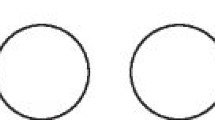Abstract
Data sources
The Cochrane Oral Health Group's Trials Register, the Cochrane Central Register of Controlled Trials (CENTRAL), Medline and Embase databases were searched with no language or date restrictions. Handsearching of a number of orthodontic journals was undertaken.
Study selection
Randomised controlled trials (RCTs) comparing fixed and removable treatment options for the management of relapsed lower front teeth after orthodontic treatment were to be considered. RCTs involving patients with craniofacial deformities/syndromes or serious skeletal deformities were excluded.
Data extraction and synthesis
Two review authors, independently and in duplicate, assessed the results of the searches to identify studies for inclusion. The Cochrane Collaboration statistical guidelines were to be followed for data synthesis.
Results
No trials were identified.
Conclusions
This review has revealed that there was no evidence from RCTs to show that one intervention was superior to another to manage the relapse of the alignment of lower front teeth using any method or index, aesthetic assessment by participants and practitioners, treatment time, patient discomfort, quality of life, cost-benefit considerations, stability of the correction, and side effects including pain, gingivitis, enamel decalcification and root resorption. There is an urgent need for RCTs in this area to identify the most effective and safe method for managing the relapse of alignment of the lower front teeth.
Similar content being viewed by others
Commentary
One of the most disappointing aspects of carrying out, or undergoing orthodontic treatment is that the result achieved at the end of active treatment may be unstable. The tendency for teeth to return towards their pre-treatment position following orthodontic treatment is well documented.1,2 However, in some individuals, increasing malalignment of the incisor teeth continues over a period of years and decades. The cause of this is not well understood but may result from further growth, changes in the occlusion and altered pressure from the lips, cheeks and tongue.3,4 As a result, most orthodontists now recommend long-term retention. The main choice facing the clinician at the end of active treatment is whether to use a fixed retainer bonded to the lingual surfaces of the anterior teeth, or removable retainers which are under the control of the patient.
Ultimately, if the patient fails to wear the removable retainers or the fixed retainers break, or are removed, irregularity of the incisors may ensue. The patient may decide to accept the position and the possibility of further worsening malalignment, to retain the teeth in their current position or to seek re-treatment. This Cochrane review aims to investigate any evidence comparing different forms of active retreatment using a variety of appliances, and also no active treatment. Although relapse can affect both the upper and lower incisors, this review investigates interventions in the lower arch only. A conventional on-line search strategy was employed as well as a hand search of the four major orthodontic journals. Interestingly, the authors also handsearched four different Chinese journals but did not include any Scandinavian or Australian publications, for example. This may reflect the fact that the review emanated from authors who are predominantly Chinese.
Since this review seeks to compare interventions for managing relapse, it is to all intents and purposes comparing the efficacy and efficiency of different types of orthodontic tooth alignment, albeit for re-treatment. It therefore ends up essentially looking at studies which compare alignment of teeth using conventional fixed appliances (either labial or lingual) or removable appliances (either a series of active aligners or removable appliances constructed from acrylic and wire). The electronic search (following removal of duplicate publications) revealed 527 publications meeting the search criteria. However, none was found to focus on interventions to correct relapse or indeed compared interventions. No randomised clinical trials meeting the inclusion criteria were found.
The authors conclude that the experience of the orthodontist will ultimately prove to be the deciding factor in selecting the best suitable form of intervention to treat relapse.
Practice points
-
Any patient undergoing orthodontic treatment should be prepared to wear retainers long term
-
Although this study shows that there is inadequate information relating to the efficacy of different forms of therapy for retreatment, most orthodontists would prefer to use fixed appliances for significant tooth movements and may use aligners for minor re-treatments
References
Little RM, Riedel RA, Artun J . An evaluation of changes in mandibular anterior alignment from 10 to 20 years postretention. Am J Orthod Dentofacial Orthop. 1988; 93: 423–428.
Olive RJ, Basford KE . A longitudinal index study of orthodontic stability and relapse. Aust Orthod J. 2003; 19: 47–55.
Little RM, Wallen TR, Riedel RA . Stability and relapse of mandibular anterior alignment-first premolar extraction cases treated by traditional edgewise orthodontics. Am J Orthod. 1981; 80: 349–365.
Melrose C, Millett DT . Toward a perspective on orthodontic retention? Am J Orthod Dentofacial Orthop. 1998; 113: 507–514.
Author information
Authors and Affiliations
Additional information
Address for correspondence: Luisa Fernandez Mauleffinch, Review Group Co-ordinator, Cochrane Oral Health Group, MANDEC, School of Dentistry, University of Manchester, Higher Cambridge Street, Manchester, M15 6FH, UK. E-mail: luisa.fernandez@manchester.ac.uk
Yu Y, Sun J, Lai W, Wu T, Koshy S, Shi Z. Interventions for managing relapse of the lower front teeth after orthodontic treatment. Cochrane Database Syst Rev 2013; 9: Art. No.: CD008734. DOI: 10.1002/14651858.CD008734.pub2.
This paper is based on a Cochrane Review published in the Cochrane Library 2013, issue 9 (see www.thecochranelibrary.com for information). Cochrane Reviews are regularly updated as new evidence emerges and in response to feedback, and the Cochrane Library should be consulted for the most recent version of the review.
Rights and permissions
About this article
Cite this article
O'Neill, J. No randomised trials of interventions to manage relapse of lower incisors after orthodontic treatment. Evid Based Dent 14, 116–117 (2013). https://doi.org/10.1038/sj.ebd.6400971
Published:
Issue Date:
DOI: https://doi.org/10.1038/sj.ebd.6400971
This article is cited by
-
Restorative complications of orthodontic treatment
British Dental Journal (2016)



